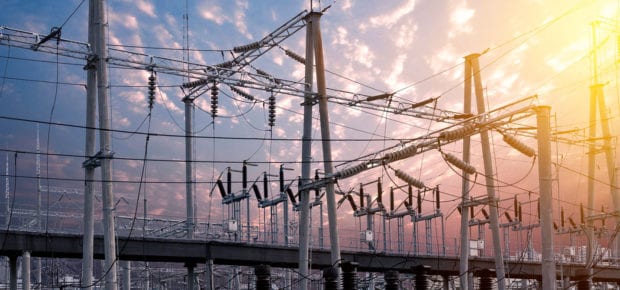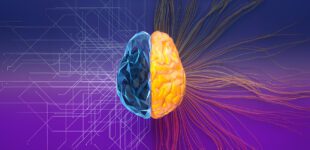June 1, 2017
Artificial Intelligence is making its way into all types of industries, including the energy sector. IEEE Senior Member Shawn Chandler shares his thoughts on the ways that AI will affect and impact our lives as energy consumers.
IEEE Transmitter: We’ve heard of AI impacting transportation, healthcare and security. In what major ways is AI impacting the energy sector?
Shawn Chandler: Making a distinction for what is meant by “AI” is important here. When I refer to AI, I mean the the application of machine learning for the purposes of automation and computational support of decision-making in a complex system. The energy industry is largely impacted just the same as the other industries you mention, with significant growth in the use of AI to leverage big data and draw inference from very large data sets. Many aspects of the utility enterprise will benefit, but in particular, AI has great potential to coordinate and optimize the use of distributed energy resources, electric vehicles, and IoT. Use of AI also aligns well with the current pace of change that utilities, regulators and customers expect with improvements to common utility operations including:
- reliability —self-healing grids, operations improvement and efficient use of renewable resources and energy storage
- safety —outage prediction and outage response
- cybersecurity of systems —threat detection and response
- optimization —asset, maintenance, workflow and portfolio management
- enhancements for the customer experience —faster and more intuitive interactive voice response, personalization, product and service matching
IEEE Transmitter: How will the impacts of AI on energy help the everyday consumer?
Chandler: Generally in the ability to optimize the use of a consumer’s resources, categorized as energy storage, load and generation. For example, demand side management automation using AI – such as moving or scheduling a particular use of energy into a specific demand period – can result in a decrease to the cost of service for a consumer. AI may also alert or inform a consumer based on real-time sensing. For example, informing on an emergency issue, such as a failing appliance in the home, or a downed power line in an expected path of travel, or for recommending choices and services, such as energy-related equipment settings, replacements or upgrades.
IEEE Transmitter: How will AI impact power consumption, supply and demand across the energy system to save money?
Chandler: First, AI is being used to optimize the supply side. One aspect of operation of the electrical grid is the ubiquitous use of reserve resources (power plants) across the grid standing by in case of an emergency outage of another power plant somewhere in the system, or a change in the availability of system generation due to renewable resource intermittency, such as that experienced with wind and solar. AI can be used to better predict these changes, and craft a response that is tuned to expected system behavior over time.
These optimization efforts result in energy savings, through management of a thinner margin of reserves that is less costly to the operation of the system as a whole. In terms of consumption, AI will be used to better predict the failure of critical equipment in the distribution chain, lessening costs associated with outage and unexpected service disruption by allowing for less costly planned replacement or reliability centered maintenance. Finally, on the demand side, AI will better manage the use of energy for each consumer, through IoT system interaction, smart device integration and so forth.
IEEE Transmitter: Where do you see the energy sector in five years and how involved will AI be then compared to now?
Chandler: In the next five years the use of energy storage and IoT is expected to increase significantly, along with an increased development of distributed energy resources with two-way power flow in the distribution grid, and new roles for energy service suppliers, utilities and consumers that produce energy, or prosumers. This evolution of the grid has been called the “Energy Cloud,” and the use of AI can be considered critical to the management of such a system, given the number of points of control in the grid increasing from many tens of thousands to hundreds of millions, or even billions. Compared to now, where AI is a tool being explored for optimization opportunities, in the future, it will be a requirement for effective grid participation.
Shawn Chandler is an IEEE Senior Member and Associate Director at Navigant Consulting, Inc., within the Energy practice. Mr. Chandler contributes to engagements relating to grid modernization and smart grid program development, having extensive experience in power operations, utility system integration, and real-time energy system development.





 Meaningful Momentum or Running in Place?
Meaningful Momentum or Running in Place? AI Through Our Ages
AI Through Our Ages Liquid Infrastructure: Our Planet's Most Precious Resource
Liquid Infrastructure: Our Planet's Most Precious Resource The Impact of Technology in 2025
The Impact of Technology in 2025 Quantum and AI: Safeguards or Threats to Cybersecurity?
Quantum and AI: Safeguards or Threats to Cybersecurity? Why AI Can't Live Without Us
Why AI Can't Live Without Us Bits, Bytes, Buildings and Bridges: Digital-Driven Infrastructure
Bits, Bytes, Buildings and Bridges: Digital-Driven Infrastructure Impact of Technology in 2024
Impact of Technology in 2024 Emerging AI Cybersecurity Challenges and Solutions
Emerging AI Cybersecurity Challenges and Solutions The Skies are Unlimited
The Skies are Unlimited Smart Cities 2030: How Tech is Reshaping Urbanscapes
Smart Cities 2030: How Tech is Reshaping Urbanscapes Impact of Technology 2023
Impact of Technology 2023 Cybersecurity for Life-Changing Innovations
Cybersecurity for Life-Changing Innovations Smarter Wearables Healthier Life
Smarter Wearables Healthier Life Infrastructure In Motion
Infrastructure In Motion The Impact of Tech in 2022 and Beyond
The Impact of Tech in 2022 and Beyond Cybersecurity, Technology and Protecting Our World
Cybersecurity, Technology and Protecting Our World How Technology Helps us Understand Our Health and Wellness
How Technology Helps us Understand Our Health and Wellness The Resilience of Humanity
The Resilience of Humanity Harnessing and Sustaining our Natural Resources
Harnessing and Sustaining our Natural Resources Creating Healthy Spaces Through Technology
Creating Healthy Spaces Through Technology Exceptional Infrastructure Challenges, Technology and Humanity
Exceptional Infrastructure Challenges, Technology and Humanity The Global Impact of IEEE's 802 Standards
The Global Impact of IEEE's 802 Standards Scenes of our Cyber Lives: The Security Threats and Technology Solutions Protecting Us
Scenes of our Cyber Lives: The Security Threats and Technology Solutions Protecting Us How Millennial Parents are Embracing Health and Wellness Technologies for Their Generation Alpha Kids
How Millennial Parents are Embracing Health and Wellness Technologies for Their Generation Alpha Kids Space Exploration, Technology and Our Lives
Space Exploration, Technology and Our Lives Global Innovation and the Environment
Global Innovation and the Environment How Technology, Privacy and Security are Changing Each Other (And Us)
How Technology, Privacy and Security are Changing Each Other (And Us) Find us in booth 31506, LVCC South Hall 3 and experience the Technology Moon Walk
Find us in booth 31506, LVCC South Hall 3 and experience the Technology Moon Walk Virtual and Mixed Reality
Virtual and Mixed Reality How Robots are Improving our Health
How Robots are Improving our Health IEEE Experts and the Robots They are Teaching
IEEE Experts and the Robots They are Teaching See how millennial parents around the world see AI impacting the lives of their tech-infused offspring
See how millennial parents around the world see AI impacting the lives of their tech-infused offspring Take the journey from farm to table and learn how IoT will help us reach the rising demand for food production
Take the journey from farm to table and learn how IoT will help us reach the rising demand for food production Watch technical experts discuss the latest cyber threats
Watch technical experts discuss the latest cyber threats Explore how researchers, teachers, explorers, healthcare and medical professionals use immersive technologies
Explore how researchers, teachers, explorers, healthcare and medical professionals use immersive technologies Follow the timeline to see how Generation AI will be impacted by technology
Follow the timeline to see how Generation AI will be impacted by technology Learn how your IoT data can be used by experiencing a day in a connected life
Learn how your IoT data can be used by experiencing a day in a connected life Listen to technical experts discuss the biggest security threats today
Listen to technical experts discuss the biggest security threats today See how tech has influenced and evolved with the Games
See how tech has influenced and evolved with the Games Enter our virtual home to explore the IoT (Internet of Things) technologies
Enter our virtual home to explore the IoT (Internet of Things) technologies Explore an interactive map showcasing exciting innovations in robotics
Explore an interactive map showcasing exciting innovations in robotics Interactively explore A.I. in recent Hollywood movies
Interactively explore A.I. in recent Hollywood movies Get immersed in technologies that will improve patients' lives
Get immersed in technologies that will improve patients' lives